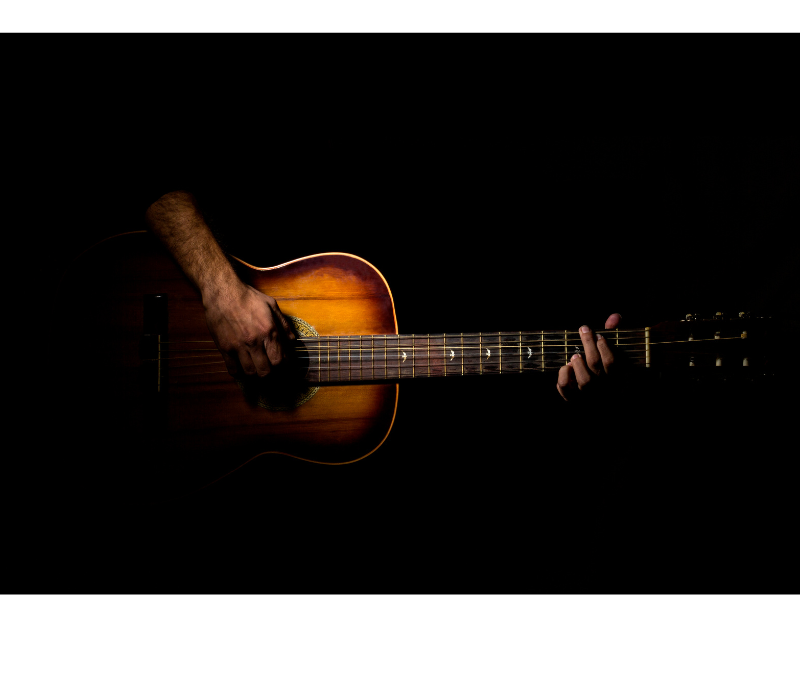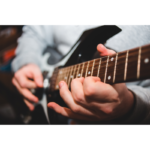Introduction
Guitar notes are essential to understand. Mastering all the guitar notes is a significant milestone for any guitarist. Understanding the placement of notes across the fretboard not only enhances your playing ability but also opens up endless possibilities for creativity and expression. In this guide, we’ll explore effective strategies to help you learn all the notes on the guitar fretboard.
Understanding The Basics Of Guitar Notes
Before jumping into learning the notes, let’s familiarize ourselves with the fundamentals. The guitar fretboard consists of six strings, each representing a different tones. The strings, from lowest to highest pitch, are E, A, D, G, B, and high E. The frets are the spaces between the metal bars on the neck, where you press down to produce different pitches.
Memorizing Open String Notes
Begin by memorizing the open string notes. This is the foundation upon which you’ll build your knowledge of the fretboard. Start with the low E string and work your way up to the high E string. Repeat the names of the strings aloud as you play them to reinforce memorization. Try playing each note with your eyes closed. This will requires accuracy with your fingers and ears.
Take your time and learn each string at a time. Start with the 6th string (E) and memorize each notes as you move up towards the 12th fret. This will help with creating power chords across the 6th string. Memorizing the guitar notes and finding power chords goes hand in hand.
Utilize Mnemonics
Mnemonics are memory aids that can be incredibly helpful in memorizing complex information. Create your own mnemonic devices to remember the order of notes on each string. For example, “Eddie Ate Dynamite, Good Bye Eddie” can help you remember the order of the open strings from low to high (E, A, D, G, B, E).
Learn The Natural Guitar Notes
The natural notes are the building blocks of music, consisting of the notes A, B, C, D, E, F, and G. Once you’ve memorized the open string notes, start identifying these natural notes on each string. Begin with the notes on the first few frets and gradually work your way up the fretboard. As you learn the natural notes your visibility into the fretboard will expand and you will start to see patterns on the guitar.
Use Patterns & Reference Points
Recognize patterns and reference points on the fretboard to expedite your learning process. For instance, the 12th fret is an octave higher than the open string note. This symmetry repeats across the fretboard, making it easier to identify notes. Additionally, landmarks such as fret markers can serve as visual cues to help you navigate the fretboard.
Practice Regularly
Consistent practice is key to mastering the guitar fretboard. Set aside dedicated time each day to review and reinforce your knowledge of the notes. Incorporate exercises such as playing scales, arpeggios, and simple melodies to familiarize yourself with different positions on the fretboard. Here is a sample practice routine that you can implement today:
- Warm up, 5 min
- Chords, 10 min
- Pentatonic Scale/Fretboard practice, 10 min
If you are consistent, you can really make a difference with the guitar notes and scales patterns.
Practice does not make perfect. Only perfect practice makes perfect.
Vince Lombardi
Use Resources & Tools
Fretboard maps, charts posters and courses are all wonderful tools to help you learn all the guitar notes. We have a bunch of free posters to help you learn the guitar notes, scales and chords. Taking time to find great resources to help will make a huge difference. Learning these concepts takes time and the right resources at the right time will always help you learn the guitar faster.
Experiment & Explore with Guitar Notes
Learning the guitar fretboard is not just about memorization; it’s also about exploration and experimentation. Once you’re comfortable identifying notes, experiment with different chord voicings, pentatonic scales, and phrasing techniques. Embrace the creative process and allow yourself to make mistakes along the way.
Conclusion
Mastering the guitar fretboard is a gradual process that requires patience, dedication, and practice. By following the strategies outlined in this blog post and remaining persistent in your efforts, you’ll soon develop a deep understanding of the notes on the fretboard. Remember, learning the guitar is a journey, so enjoy the process and celebrate your progress along the way. Rock on!

Justin Comstock
Host of the Guitar Freaks Podcast
Justin is a Blues guitarist from Utah. He created a guitar learning tool called the FretDeck on Kickstarter that has helped many guitar players master the fretboard. He is also the host of the Guitar Freaks Podcast.
Download free tools for learning guitar










